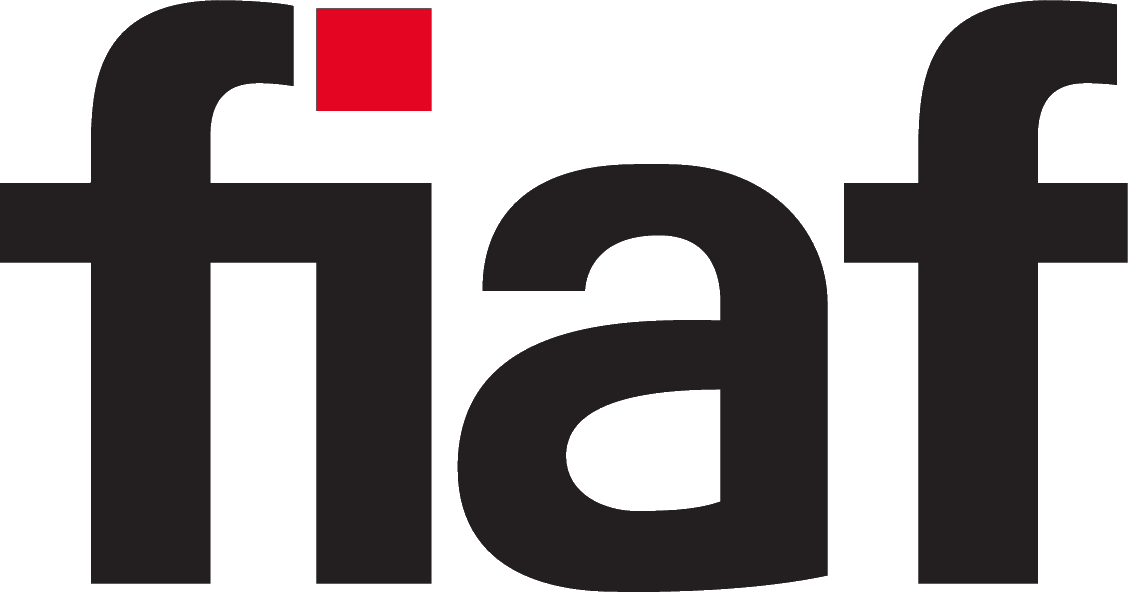Film Restoration / FIAF Summer School:
Online Distance Learning Course
This Online Distance Learning Course has been conceived with the idea of offering the FIAF Restoration Summer School students an historical, technical and ethical overview of the Film Restoration discipline before attending the Festival, meeting professionals and training at the L’Immagine Ritrovata laboratory. It has been discussed with and enriched by the FIAF Technical Commission members and correspondents.
It is also important to mention that the resources available are all in English – therefore they only represent part of the researches and publications on Film Restoration.
Structure:
The Distance Learning Contents are organized in 7 “sessions” with the intention of covering the most important issues and aspects of Film Technology and Restoration.
The list of resources cannot be considered as exhaustive and has been compiled with the ambition of providing a better knowledge and understanding of the Film Restoration field:
- Terms and Definitions
- Materials and Bases (Image & Sound)
- Preservation and Techniques
- Color
- Digital
- Versions and Reconstructions
- Ethics and Methodology
Contents:
All the compiled resources have been written by archivists (and experts collaborating with archives) who often belong to archival organizations (FIAF, AMIA and the late Gamma Group). The texts are not only theories about Film Restoration; they are also the result of years of professional experience, high pragmatic knowledge of archival film elements and research of ethics in their domain.
The central resource used is Restoration of Motion Pictures published under the direction of Paul Read and Mark Paul Meyer (2000), which gathers materials of members of the Gamma Group in the frame of “a training program for young technicians in film archives and specialist film laboratories”. This publication is still the main resource for anyone wanting to learn about Film Restoration.
Periodical publications, as Journal of Film Preservation (published by FIAF since 1993 in its actual format), Cinegrafie (Cineteca di Bologna), The Moving Image and AMIA Tech Review (AMIA), Film History (Indiana University Press) or Griffithania (Cineteca del Friuli) offer very interesting in-depth articles on specific restoration projects or subjects (technology, history, preservation, storage, etc.).
Sections of books have also been included: Restauro, conservazione e distruzione dei film (published in 2001 under the direction of Luisa Comencini and Matteo Pavesi), All the colours of the world (a compilation of articles by various authors on color techniques and restoration), published in 2000 by Cineteca di Bologna, The Digital Dilemma 2 of the Science and Technology Council of the Academy of Motion Picture Arts and Sciences or Preserve then Show, published in 2002 by the Danish Film Institute. Other technical or institutional publications (in full text) are also referenced as tools or possible further reading resources (such as Giovanna Fossati’s second edition of From Grain to Pixels, The Film Preservation Guide edited by the National Film Preservation Foundation, and technical books as Exploring the Color Image and Basic Photographic Sensitometry Workbook by Kodak, or the 1938 Motion Picture Sound Engineering).
The resources represent a state of the art of the knowledge in the field, which follows the development of the reflection on Film Restoration – still a young discipline – for which several authors proposed in this compilation have formulated the key concepts and words – especially in the first ‘session’ (Terms and Definitions).
The resources are organized in several sections: Documents, Further Reading, Tools and Presentations or Videos. The Documents represent the central part of the resources and should be read before arriving in Bologna. The resources listed under Further Reading and Presentations are recommended for those who want to learn more about a specific topic (not necessarily before the summer school). Other useful resources have been listed in the Tools section, such as glossaries, recommendations etc. Most of the resources are available in PDF versions, except some Further Reading resources, Tools or Presentations which are freely available online.
Acknowledgments:
FIAF Technical Commission members and correspondents, L’Immagine ritrovata laboratory, Participants of FIAF’s P.I.P. Project, Iris Deniozou (who compiled many resources about film restoration in the frame of her PhD) and the Swedish Film Institute and the Cinémathèque française for their support.
This Online Distance Learning Course was devised by Camille Blot-Wellens, independent researcher and member of FIAF Technical Commission, in September 2014.
It can be downloaded as a PDF file HERE.
Film Restoration / FIAF Summer School - Online Ressources
1. Terms and Definitions
Documents
- “Introduction to the restoration of motion picture film” in READ; MEYER: Restoration of Motion Picture Film, 2000, pp. 1-5
- “Before motion pictures” in READ; MEYER: Restoration of Motion Picture Film, 2000, pp. 12-17
- MAZZANTI: “Footnotes. (For a glossary of film restoration)” in COMENCINI; PAVESI: Restauro, conservazione e distruzione dei film, 2001, pp. 23-31
- FIAF Technical Commission: Preservation Best Practice (2009)
Tools
https://www.fiafnet.org/images/tinyUpload/E-Resources/Commission-And-PIP-Resources/TC_resources/Online Resources TC.pdf
Presentations / Videos
- BROWNLOW: “What does it mean to restore a film?”, Symposium La Révolution numérique. Et si le cinéma perdait la mémoire?, La Cinémathèque française (October 2011)
2. Materials
2. 1 Image / Film Base
Documents
- “The film making industry” in READ; MEYER: Restoration of Motion Picture Film, 2000, pp. 18-24
- “Film bases and tests” in READ; MEYER: Restoration of Motion Picture Film, 2000, pp. 247-251
Further reading
- PATTERSON: “Highlights from the History of Motion Pictures Formats” in American Cinematographer, Vol. 53 (January 1973), pp. 40-43/64-65/84-90
- MEYER: “Nitrate, take care!” in COMENCINI; PAVESI: Restauro, conservazione e distruzione dei film, 2001, pp. 54-56
Tools
- NATIONAL FILM PRESERVATION FOUNDATION: The Film Preservation Guide. The Basics for Archives, Libraries, and Museums, 2004
- KOVAC: A Reference Guide to Books, Articles, Periodicals, Manuals, Glossaries, Pamphlets and Websites concerning Nitrocellulose Motion Picture Film, AMIA Nitrate Film Interest Group, November 2004
2.2 Sound
Documents
- HANSON: “The History of Sound in the Cinema. The 1997 Bernard Happé Memorial Lecture” in Cinema Technology (July-August 1998), pp. 8-13
- “Talking motion pictures” in READ; MEYER: Restoration of Motion Picture Film, 2000, pp. 25-34
- Kodak Optical Recording, June 1994
- “Restoration of film sound” in READ; MEYER: Restoration of Motion Picture Film, 2000, pp. 210-215
Further reading
- KELLOGG: “History of Sound Motion Pictures” in Journal of the SMPTE 1955: June (pp. 291-302), July (pp. 356-374), August (pp. 422-437)
http://www.aes.org/aeshc/docs/smpte/movie.sound/kellogg-history1.pdf
http://www.aes.org/aeshc/docs/smpte/movie.sound/kellogg-history2.pdf
http://www.aes.org/aeshc/docs/smpte/movie.sound/kellogg-history3.pdf
- HEIBER: “Tommy, Can You Hear Me? The Quintaphonic Restoration of ‘One Hit Wonder’” in AMIA Tech Review, October 2010, Vol. 2, pp. 1-6
- “Sound Restoration case studies” in READ; MEYER: Restoration of Motion Picture Film, 2000, pp. 314-316
Tools
- JISC. Digital Media: An Introduction to Digital Audio
- V.A.: Motion Picture Sound Engineering, 1938
3. Preservation / Techniques
Documents
- “Motion picture film materials” in READ; MEYER: Restoration of Motion Picture Film, 2000, pp. 45-50
- “Identification of archive film and interpretation of historical data” in READ; MEYER: Restoration of Motion Picture Film, 2000, pp. 53-68
- “Film damage, repair and preparation” in READ; MEYER: Restoration of Motion Picture Film, 2000, pp. 83-104
Further reading
- BELSTON; BODDE; CHERCHI USAI; CRISP; DOROS & HELLER; HORAK; MELVILLE; POGORZELSKI; TRAINOR; WAGNER: “Film Preservation” in Cineaste (Fall 2011), pp. 40-50
- “Editing, cutting and post-production” in READ; MEYER: Restoration of Motion Picture Film, 2000, pp. 35-39
- “Sensitometry and quality control” in READ; MEYER: Restoration of Motion Picture Film, 2000, pp. 105-125
- “Printing” in READ; MEYER: Restoration of Motion Picture Film, 2000, pp. 126-148
- “Grading” in READ; MEYER: Restoration of Motion Picture Film, 2000, pp. 149-156
- “Principles of duplication and contrast control” in READ; MEYER: Restoration of Motion Picture Film, 2000, pp.157-166
- “Processing” in READ; MEYER: Restoration of Motion Picture Film, 2000, pp. 167-179
Tools
- ADELSTEIN: IPI Media Storage. Quick Reference (2009)
- SOCRATES DE OLIVEIRA: Film Deterioration Guide (2002)
- Brian R. Pritchard website
- GAMMA GROUP: The Vinegar Syndrome. A Handbook. Prevention, remedies and the use of new technologies, 2000
- Kodak: Basic Photographic Sensitometry Workbook, 2006
- BIGOURDAN: “Film Storage Studies” in NISSEN; RICHTER LARSEN; CHRISTENSEN; STUB JOHNSEN: Preserve then Show, 2002, pp. 40-51
- NATIONAL FILM PRESERVATION BOARD: Preservation Research of the National Film Preservation Board
- NATIONAL FILM AND SOUND ARCHIVE (AUSTRALIA): Care for audiovisual materials
4. Color
Documents
- “Colour” in READ; MEYER: Restoration of Motion Picture Film, 2000, pp. 40-44
- READ: “’Unnatural Colours’: An introduction to colouring techniques in silent era movies” in Film History, Vol. 21 (2009), pp. 9-46
- DESMET; READ: “The Desmetcolor Method for restoring Tinted and Toned Films” in V. A., All the colours of the world. Colours in early mass media 1900-1930, 2000, pp. 147-150
- BERRIATÚA: “Regarding a catalogue of the Tints used on the Silent Screen” in V. A., All the colours of the world. Colours in early mass media 1900-1930, 2000, pp. 135-139
- “Restoration of natural colour film” in READ; MEYER: Restoration of Motion Picture Film, 2000, pp. 195-209
Further reading
- RUEDEL: “The Technicolor Notebooks at the George Eastman House” in Film History, Vol. 21 (2009), pp. 47-60
- BERRIATÚA; BLOT-WELLENS: “The Colors of ‘Phantom’” in Cinegrafie nº 16 (2003), pp. 391-402
- RUEDEL; CURRÒ; DEN KAMP: “Towards a more accurate preservation of Color. Heritage, research and the film restoration laboratory” in BROWN; STREET; WATKINS: Color and the Moving Image. History, Theory, Aesthetics, Archive, New York: Routledge, 2012, pp. 219-229
- SMPTE: Elements of Color in Professional Motion Pictures (1957)
- MAZZANTI: “Colours, audiences, and (dis)continuity in the ‘cinema of the second period’ in Film History, Vol. 21 (2009), pp. 67-93
- MAZZANTI: “Back to Life. Notes on the Restoration of ‘Rapsodia Satanica’” in Cinegrafie nº 9 (1996), pp. 204-206
- MABBERLEY; READ; SNOEK: “Recording and Reproducing the Original Tints and Tones of ‘Quo Vadis’. A Technical Study” · in V. A., All the colours of the world. Colours in early mass media 1900-1930, 2000, pp. 151-155
Tools
- KODAK: Exploring the Color Image (1996)
5. Digital
Documents
- FIAF Technical Commission: Digital Preservation Principles
- ORAN; ROTH: “Color Space Basics” in AMIA Tech Review, May 2012 (Issue 4), pp. 1-22
- CHRISTENSEN; KUUTTI: A Digital Agenda for Film Archives, 2012
- NOWAK: Digital Cinema Technologies from the Archive’s Perspective (2012)
- GALT: The Truth about 2K, 4K and the future of pixels (2009)
Further reading
- MAZZANTI: Challenges of the Digital Era for Film Heritage Institutions, 2011
- WEBB: “Give Us back our Beauty” in GIULIANI; ROBINSON (Ed.): The Collegium Papers IV. The Pordenone Silent Film Festival (2002), pp. 93-108
- READ: “Hollywood’s Proposals for Digital Cinema, Digital Projection of Heritage Film Content at Original Frame Rates” in Journal of Film Preservation nº 74-75 (November 2007), pp. 61-70
- FOSSATI: From Grain to Pixels, 2011 (2nd Edition)
Tools
- FIAF Technical Commission: Choosing a Film Scanner (2012)
- GANT; FOSSATI: Some considerations when setting up a digitization workflow (2012)
- FIAF Technical Commission: Digitization for Film Archives – Assorted Complications (2012)
- FIAF Technical Commission: Recommendation on the deposit and acquisition of D-cinema elements for long term preservation and access (2010)
- “Nonprofit Audiovisual Archives” in SCIENCE AND TECHNOLOGY COUNCIL – THE ACADEMY OF MOTION PICTURE ARTS AND SCIENCES: The Digital Dilemma 2. Perspectives from Independent Filmmakers, Documentarians and Nonprofit Audiovisual Archives, 2012, pp. 37-66
Presentations / Videos
- GALT; THORPE: Demystifying Digital Cinema Camera Specifications - A Talk by Panavision's John Galt and Canon's Larry Thorpe (2008)
- TSUNEISHI (Filmarchiv Austria): “Some pragmatic solutions for problematic sources”, ARRI Workshop (May 2011)
- KOERBER: “Film Restoration in current digital postproduction workflows: the way to go?”, Symposium La révolution numérique. Et si le cinema perdait la mémoire?, La Cinémathèque française (October 2011)
6. Versions / Reconstructions
Documents
- BERRIATÚA: “The Restoration of Faust” in Cinegrafie nº 9 (1996), pp. 206-217
- KOZARSKI: “Reconstructing Greed. How long, and what color?” in Griffithania, nº65 (1999), pp. 5-29
- KOERBER: “Notes on the proliferation of Metropolis (1927)” in The Moving Image, Vol. 2, nº 1 (2002), pp. 73-89
- TYBJERG; CHRISTENSEN: “The Restoration of Dreyer’s Der var engang” in Journal of Film Preservation nº 67 (2004), pp. 31-36
Further reading
- CUFF: “Interpretation and Restoration: Abel Gance’s La Roue (1922)” in Film History, Vol. 23 (2011), pp. 223-241
- ANDERSON: “D.W. Griffith’s Intolerance: Revisiting a Reconstructed Text” in Film History, Vol. 25 (2013), pp. 57-89
- KOERBER: “On the Restoration of Menschen am Sonntag. Examination of a Specific Case” in Cinegrafie nº 11 (1998), pp. 262-275
- POZZI; DEIANA; MEYER: “’Kif Tebbi’. Reconstruction and Restoration of Italy’s Most Famous Colonial Film”, Text Version published in Cinegrafie nº 17 (2004)
- WOSTRY: “Sodom and Gomorrah. Notes on a Reconstruction, or Less is More” in The Moving Image, Vol. 3, nº 2 (2003), pp. 19-39
- BLOT-WELLENS: “Considering the restoration of early films: The Case of the Pathé negatives” in Journal of Film Preservation nº 88 (April 2013), pp. 85-87
Presentations / Videos
- WEBB (British Film Institute): “Restoring the Silent Films of Alfred Hitchcock”, ARRI Archive Workshop (May 2011)
7. Ethics / Methodology
Documents
- “Principles of film restoration and film reconstruction” in READ; MEYER: Restoration of Motion Picture Film, 2000, pp. 69-79
- CANOSA; FARINELLI; MAZZANTI: “Black on White. Notes on Film Restoration: the Documentation” in Cinegrafie nº 10 (1997), pp. 191-202
- BUSCHE: “Just another form of ideology? Ethical and Methodological Principles in Film Restoration” in The Moving Image, Vol. 6, nº2 (2006), pp. 1-29
- WALLMÜLLER: “Criteria for the Use of Digital Technology in Moving Image Restoration” in The Moving Image, Vol. 7, nº 1 (2007), pp. 78-91
Further reading
- PESCETELLI: “Textual Criticism, Hermeneutics and the Restoration of Silent Films” in Iris, Vol. 1, 2012
- MEYER: “Film Restoration using Digital Technologies” in Journal of Film Preservation nº 57 (1998), pp. 33-36
- EDMONSON: Audiovisual Archiving, 2004
Tools
- FIAF: Code of Ethics (1998-2009)





